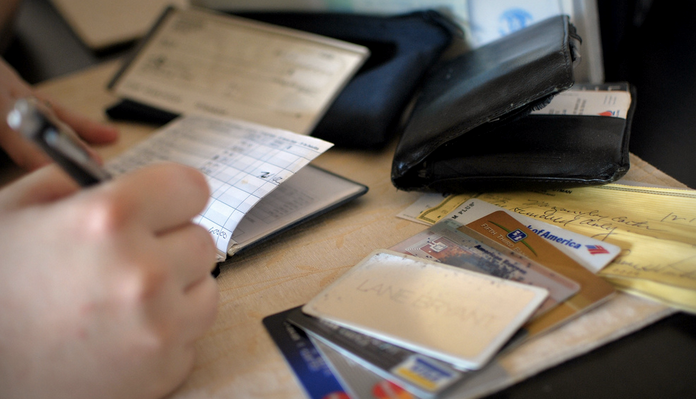Proposed Scorecard Could Help Protect Students From Dangerous Banking Products

(Morgan)
For the past several years, federal agencies, lawmakers and consumer advocates have shared their displeasure with the rather cozy relationship between the financial industry and higher education institutions and set out to protect consumers from the often shady deals made between the two groups. Now the Consumer Financial Protection Bureau is setting out to protect students by creating a scorecard that would help ensure colleges have all the pertinent details when it comes to partnering with financial institutions that offer checking and prepaid accounts to students.
The CFPB announced today that it is seeking input on a draft of the Safe Student Account Scorecard [PDF] that would help colleges access upfront information about fees, features, and sales tactics before agreeing to a sponsorship.
“An important issue for young people is how best to manage their money while they are still in school,” CFPB Director Richard Cordray says in a statement about the initiative. “Because of the influence schools may have on the financial products students choose, we are working to arm them with the information they need to negotiate safe and affordable products for students.”
Officials with the Bureau say such a scorecard could help level the playing field for all financial institutions that offer affordable products, regardless of their ability to pay schools bonuses or royalties.
Typically colleges make deals with financial institution in which the school helps with or allows the promotion of credit, debit, or prepaid cards, sometimes endorsed with a college logo or linked to a student identification card.
Through these deals, colleges often receive royalties for allowing the companies to use college trademarks or logos and bonuses based on the number of students who sign up for accounts.
A report from the CFPB back in December found that in 2013 colleges and universities received nearly $43 million in royalties and bonuses from credit card issuers.
While the CFPB has found that many colleges do employ transparent, competitive bidding processes to establish their relationships with financial institutions, they may have a difficult time finding clear information on features and fees.
That’s where the new Safe Student Account Scorecard would come in.
The Bureau says the card would allow colleges to easily evaluate student costs and benefits of products by accessing information about fees, features, and marketing practices.
Specifically, the financial institutions would be asked to provide schools with:
• A clear description of product fees and features: The draft scorecard specifically seeks information on whether there is a fee for certain features, such as access to mobile banking and electronic statements, and the amount of any fee.
The scorecard will determine whether financial institutions charge any non-standard fees, as well as the availability of in-network ATMs.
The scorecard also seeks to have financial institutions explain any other fees they may charge, such as a prepaid card reload fee or balance inquiry fee.
• Full disclosure about the financial institutions’ marketing practices: The scorecard requests information on how financial institutions offering school-sponsored accounts would ensure that students receive objective and neutral information on their choices.
For example, the scorecard asks financial institutions to provide an explanation as to how they will ensure that a college has the ability to approve certain marketing materials using its brand or logo.
• How much the financial institution earns from the accounts: The scorecard provides a way for colleges to seek specific information about the cost of Safe Student Checking and Safe Student Prepaid Accounts.
For example, colleges might require that institutions would have to say how much they receive for each account opened, how much financial support they provide to the school, and how much the institution receives for each transaction with its financial product.
• Annual summary of fees: The draft scorecard would have financial institutions provide the school with an annual summary describing the fees charged to account holders at the given college.
The summary would include: number of student account holders the previous year; average and median fees paid by a student account holder per year; the three most frequently incurred fees per year; and the average and median fees paid by a student for each fee imposed.
Once the scorecard is implemented, the CFPB says it can be adapted to meet schools’ specific needs. However, it is only meant to solicit information helpful to a school’s selection process and not to establish minimum standards.
The CFPB will accept input on the draft scorecard until March 16. Consumers wanting to comment on the scorecard initiative can find information on how to do so here.
“With American consumers carrying $1.2 trillion in outstanding student debt on their backs and with the cost of college rising, the Consumer Financial Protection Bureau wants to help colleges restore their role as trusted advisers to young people across the country,” Cordray says in a statement.
Consumer advocates applauded the CFPB’s work so far in regards to the scorecard, saying it would help schools find good partners, promote better deals for students.
“This tool can make a real difference in helping schools find a good partner that will treat students fairly and honestly,” our colleague Pamela Banks, senior policy counsel for Consumers Union says in a statement. “This is part of a larger effort to clean up a system that promotes financial products that are aggressively marketed to students, but wind up eating away at the limited funds they depend on to go to school.”
CFPB Releases Safe Student Account Scorecard [Consumer Financial Protection Bureau]
Want more consumer news? Visit our parent organization, Consumer Reports, for the latest on scams, recalls, and other consumer issues.

